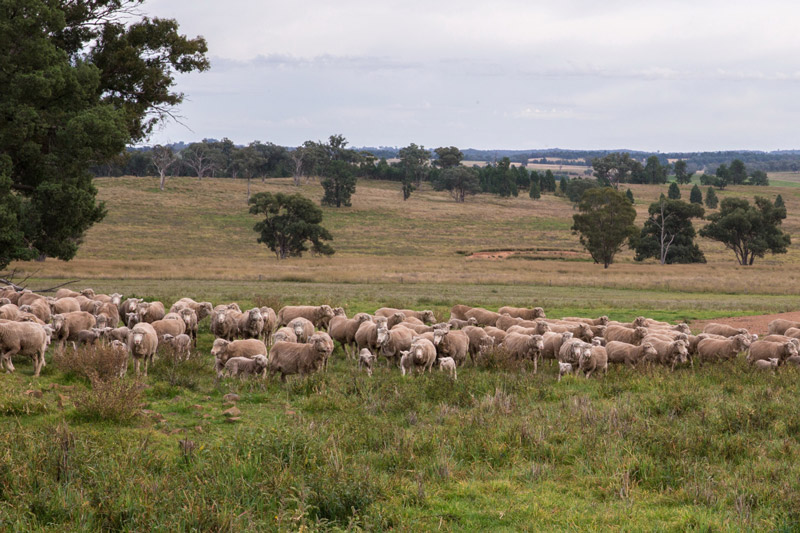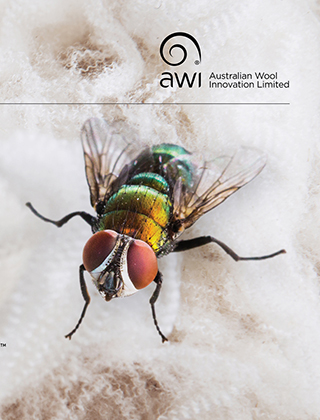How to worm your way out of a wet season

With many sheep-producing areas across Australia experiencing wetter than average seasonal conditions, the headaches of trying to keep up with worm management continues. This season, the key focus is to understand how to deal with higher parasite burdens than usual, both in the sheep and on the paddock.
At lambing and during lactation, a ewe’s immunity to worms temporarily declines. It is also important to minimise worm infections of your lambs as they have little immunity to the parasite – worms can affect lambs’ growth and even survival rates.
With many sheep-producing areas across Australia experiencing wetter than average seasonal conditions, the headaches of trying to keep up with worm management continues. This season, the key focus is to understand how to deal with higher parasite burdens than usual, both in the sheep and on the paddock.
It’s important to consider the key concerns of worm control following a season like this, such as:
- Worm numbers can increase very rapidly with the ongoing presence of warm temperatures and moist conditions.
- Usual pasture rotations may not be as effective in managing pasture larval burdens as they would under normal or average seasonal conditions (which is why you will be seeing sheep reinfected with worms sooner than usual).
- There may be less opportunity to avoid heavily contaminated pastures (see point above and consider your pastures to be ‘dirty’).
- Managing contamination with eggs and larvae on pastures will be less effective with regular falls of rain and milder temperatures.
This all leads to potentially more headaches, and most likely more treatments than what you would administer in a more average season. With this in mind, the best tools in the toolbox for managing worms in your sheep flock this year is the WormBoss, featuring your next go-to tool, the WormBoss Drench Decision Guide.
Looking for a guide more tailored to your region?
There are WormBoss Drench Decision Guides tailored for every sheep production region (see map below) that can assist your decision on whether to drench now, whether to use a persistent drench and when to WormTest again.

Access the WormBoss Drench Decisions Guides via www.wormboss.com.au/tests-tools/choosing-and-using-drenches/. They are very simple and easy to use.
How does the WormBoss Drench Decision Guide work?
Simply choose your region and select the answer that applies to the mob of sheep you are considering drenching.
A tailored report will then be produced showing the date, answers selected and a recommendation based off your answer with associated information.
The Drench Decision Guides are suitable for most situations; however, they cannot account for every factor affecting the overall health of your sheep. Always consider seeking professional advice specific to your property and sheep.
Top tips and tricks for effective worm management in your sheep flock:
- Worm test: If you are not regularly conducting worm egg counts (WECs), then do yourself and your sheep a favour and start doing it today! It’s a cost-effective way of staying ahead of the game with worms, and avoiding things getting out of control (use a WEC QA approved lab).
- Use an effective product (effective equates to a 95% or higher reduction in worms) that contains at least TWO active ingredients and use the correct dose rate (drench to the heaviest in the mob, and if there is a large variation, consider splitting the mob into heavy and light to avoid over and/or under dosing).
- Follow up drenching activities with another WEC – to check that the product/treatment has been effective.
- Continue to monitor your mobs for increases in WECs and treat as mobs reach thresholds. MONITORING is the key point here – and careful, attentive monitoring can prevent avoidable adverse events, and help keep your stock thriving.
- Know the relative susceptibility of the different classes of livestock on your farm and the types of worms that you normally see (a larval culture will determine this).
More information www.wormboss.com.au
This article appeared in the December 2022 edition of AWI’s Beyond the Bale magazine. Reproduction of the article is encouraged.














